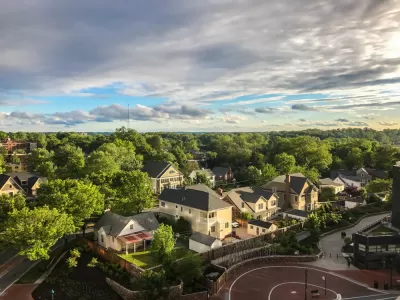The Montgomery County Council has approved a new law that sets limits on how much landlords can raise rents from year to year.

Montgomery County, Maryland will apply a controversial measure to help control the cost of rental housing—rent control.
According to an article by Morgan Baskin, the Montgomery County rent stabilization law capped rent increases at 3 percent, plus inflation, with a total maximum increase of 6 percent. The law also includes a number of exemptions, “including leased units newly constructed or substantially renovated within the last 23 years, and property owners who rent two or fewer units,” reports Baskin.
The final version of the law, approved with a 7-4 vote by the Montgomery County Council, is a hybrid of two previous proposals, adds Baskin. “One, shepherded by Mink and At-Large Councilmember Will Jawando, would have capped all rent increases at 3%; the other, dubbed by lead author Natali Fani-Gonzalez as an anti- rent-gouging bill, would have limited increases to 8% plus inflation.”
The article delivers more details about how the council navigated the complicated politics of rent control. Runaway housing prices are prompting drastic steps by local governments in Maryland, explains Baskin. “Neighboring Prince George’s County passed a temporary measure in February capping new rent increases at 3%, while D.C. passed a bill in June limiting rent increases to 6% per year over the next two years — a temporary, more aggressive iteration of its existing rent stabilization law. Mount Rainier also recently put controls on new rent increases,” reports Baskin.
FULL STORY: Montgomery County Council Passes 6% Cap On New Rent Increases

Alabama: Trump Terminates Settlements for Black Communities Harmed By Raw Sewage
Trump deemed the landmark civil rights agreement “illegal DEI and environmental justice policy.”

Planetizen Federal Action Tracker
A weekly monitor of how Trump’s orders and actions are impacting planners and planning in America.

Why Should We Subsidize Public Transportation?
Many public transit agencies face financial stress due to rising costs, declining fare revenue, and declining subsidies. Transit advocates must provide a strong business case for increasing public transit funding.

Blinded by the Light: When Brighter Headlights Decrease Safety
Bright LED headlights can create glare and reduce visibility for other drivers and pedestrians.

Study Links Covid and Poor Driving
The effects of the virus, including ‘brain fog,’ can make driving more difficult and dangerous.

Waymo Gets Permission to Map SF’s Market Street
If allowed to operate on the traffic-restricted street, Waymo’s autonomous taxis would have a leg up over ride-hailing competitors — and counter the city’s efforts to grow bike and pedestrian on the thoroughfare.
Urban Design for Planners 1: Software Tools
This six-course series explores essential urban design concepts using open source software and equips planners with the tools they need to participate fully in the urban design process.
Planning for Universal Design
Learn the tools for implementing Universal Design in planning regulations.
Caltrans
Smith Gee Studio
Institute for Housing and Urban Development Studies (IHS)
City of Grandview
Harvard GSD Executive Education
Toledo-Lucas County Plan Commissions
Salt Lake City
NYU Wagner Graduate School of Public Service





























